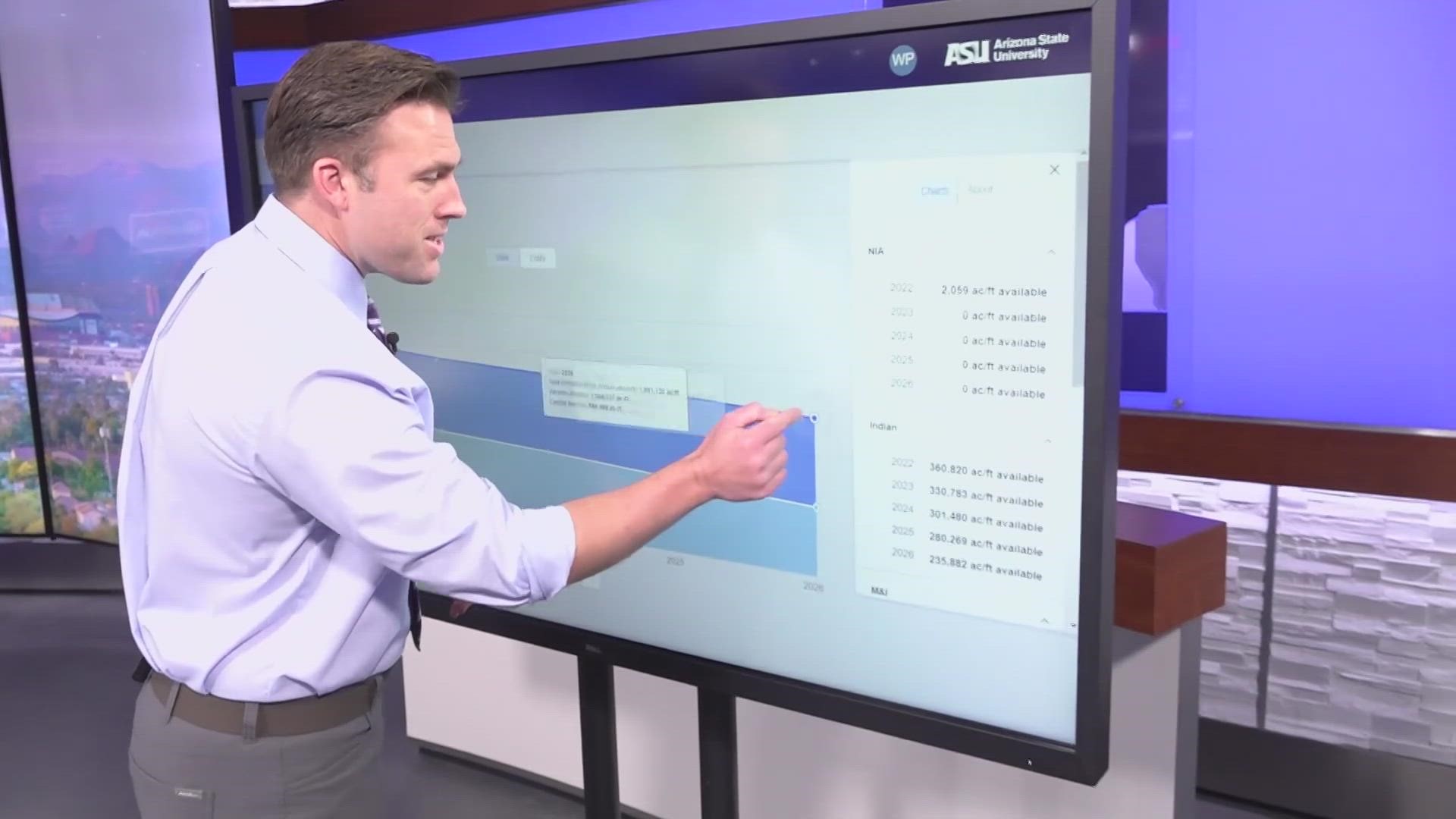BUCKEYE, Ariz. — Buckeye was very publicly thrown into Arizona's spotlight on Jan. 5 thanks to Gov. Katie Hobbs and an allegedly secret water report.
The report, by the state's groundwater management authority, found that all of the city's groundwater was obligated, and any new developers looking to bring homes or businesses to the area would have to bring another source of water with them.
ORIGINAL REPORTING: 'All groundwater is spoken for': New West Valley construction can no longer rely on groundwater after release of new report
Despite this, Buckeye Mayor Eric Orsborn recently said the city's water supply is safe.
"Buckeye's water is secure and we are not in danger," Orsborn said during an interview with 12News on Wednesday. "I'm very excited for the future."
That future was seemingly contradicted by the report, which found the aquifer the city sits on is 4.4 million acre-feet of water short of meeting its projected groundwater pumping demands. For comparison, one acre-foot of water is around the amount of water three households use in a year.
The lack of groundwater to meet the area's growth is a red alarm for Buckeye, recently listed as the fourth fastest-growing city in the U.S. with an estimated 8.6% population growth from 2020 to 2021, United States Census Bureau data shows. The city's population currently sits at 110,000 people and is projected to reach 305,400 people by 2040.
Another part of Buckeye's water supply that seems less than secure is its Colorado River allocation. The city's river water allocation is expected to have nearly a 100% reduction over the next five years, the largest among any other Arizona city.
RELATED: These 3 Arizona cities will see the biggest water reductions in the coming years. Here's why
Buckeye seems to be aware of the imbalance between its desired growth and the amount of water it currently holds. That's why Orsborn said the city is buying more water sources.
"We're working on expanding our portfolio of water and augmenting the groundwater in the Hasayampa sub-basin, doing that by going after certain key potential water sources," Orsborn said. "It's really about bolstering the input of water into the city."
Those potential sources include:
- 6,000 acre-feet of water from the Harquahala Groundwater Basin
- 2,000 acre-feet of Colorado River Water purchased through the Central Arizona Project
- 2,500 acre-feet of reclaimed water through city treatment plants
- Extra water generated through changing city development and conservation codes
"We will continue to vet out different sources of water that are out there that are the most-ripe opportunities for adding in to our portfolio," Orsborn said.
Arizona water experts and officials have previously said that there is no "new bucket" of water large enough or near enough to solve the state's water crisis. However, Buckeye's plan to change city codes hints at what experts see as the true solution.
"Most of what we need to do... is not really augmentation, but is making different kinds of choices about how water is used," said Grady Gammage Jr., Senior Research Fellow at the Kyl Center for Water Policy at a Phoenix town hall focused on water last year.
Water Wars
Water levels are dwindling across the Southwest as the megadrought continues. Here's how Arizona and local communities are being affected.

